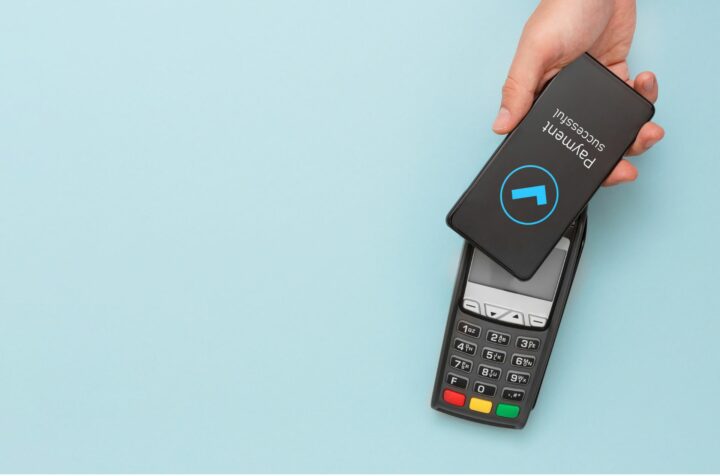Have you ever added things to your online shopping cart, started the checkout process, and then abandoned it because it was too complicated? Or have you suddenly started to feel unsure of whether the store was trustworthy? Then you already know how important user experience (UX) is for the success (or failure) of your business.
As shown in this study by Baymard on cart and checkout UX, 68% of users abandon their cart after adding items. In 9 years of research, Baymard found that the design and user experience of the checkout are the main reasons users leave a site without buying anything.
However, this doesn’t just apply to online stores. Good UX determines the success of websites, apps, but also physical products like smartphones or TVs. In short: If you ignore the importance of UX, you will lose customers.
You think that’s a big claim? It is! So let’s back it up with some concrete numbers.
What happens when you disregard UX
So, here are the hard facts. Usability consulting firm Experience Dynamics has collected statistics from experts like Adobe, Quick Sprout and Google and summarized them in an infographic.
These are a few of the key findings:
- Since 2020, UX has been the most important brand differentiator (it used to be price and product)
- 79% of people who don’t like what they find on a website go back and look for another website
- 81% of shoppers do online research before making a purchase
- 77% of mobile searches take place at home or while at work, even when a PC is nearby
- 52% of users said a poor mobile experience prevents them from connecting with a business.
- 48% of users say they feel frustrated and annoyed when they are on websites that are poorly optimized for mobile devices
Do you really want to take the risks that come with poor UX? I don’t think so. From the facts above, there are three very clear benefits (among others, of course) that show why investing in the usability of your digital products pays off.
Usability Testing vs UX Testing vs User Testing. Which is best for your business?
Find out hereThe benefits of UX for your business
UX improves conversion rate and ROI
Remember the example at the beginning of this article? The online store with the abandoned checkout process due to a poor user experience? That alone is one reason why UX leads to more conversions. Of course, not all digital products are web stores, but honestly, at some point, you want to sell something or get your customers to use something. A somewhat dated but still very relevant study by Forrester Research shows that outstanding UX can increase a website’s conversion rate by almost 400%. 400%!
In addition, Forrester has found that usability has a huge impact on customer satisfaction. There are some numbers on this as well:
- UX increases willingness to pay by 14.4%.
- UX decreases the willingness to switch brands by 15.8%.
- UX increases the probability of recommending a product to others by 16.6%.
The conclusion is simple. The internet is full of sites and offerings with more or less identical content and products. But the ones that stand out will always be those where users can find what they’re looking for quickly and effortlessly. People are impatient and when their search becomes too complicated, they change direction and go to the competition. So simple and so difficult. You only have that one chance to convince.
It’s not just your conversion rates that benefit from a good user experience. Your investment will also pay off in terms of your ROI. The Forrester report points out that every dollar spent on UX brings in $100.
I don’t think you can say that for all of your growth measures, can you? But that’s just the beginning, thanks to good usability you’ll save money in other areas as well.
UX reduces effort and costs for development and support
If you make time for (in-depth) UX research in the development phase, it will pay off in the end. This is the only way to ensure that your product can be developed to its full potential. You’ll also notice hurdles that you can already avoid in the product development stage. I’m sure you’re also aware of the fact that it’s easier and cheaper to prevent a problem from occurring in the first place than to fix it after release. Software engineer Roger Pressman wrote in his book that fixing a problem will cost you $1 in the design phase, $10 in the development phase, and $100 after release. Pretty persuasive, don’t you think?
Plus, with good UX, you can also reduce your support costs. The better users find their way around your site and the easier your product is to use, the fewer email or phone inquiries you’ll have. That’s because users find what they’re looking for – without any additional help.
UX improves SEO rankings
We all know the game and we all struggle with it day after day: If you don’t show up on the first page of Google search results, you pretty much don’t exist.
Wouldn’t it be nice if something you’re already planning to do – like improving user guidance on your site – would also ensure that you’re found further up on Google’s results? Exactly, that’s what I think too 😉 .
Let me briefly explain how UX helps you here:
Google’s goal is to deliver the best possible search results to their users. To this end, Google is constantly developing its search algorithms and it’s on these algorithms that the ranking of your site depends. While it used to be possible to trick the search algorithms with keyword stuffing (packing texts with relevant keywords), now Google attaches more and more importance to “soft factors”. These include loading times (page speed), how much time users spend on your site (time on site), whether users are convinced by the first impression of your site or jump straight back to the search results (bounce rate), the structure of your site, and its responsive design for mobile users.
Essentially, Google rewards sites that offer users excellent usability, where users find what they’re looking for. The good news is that these are all factors that you automatically improve with a focus on UX. Sounds like a dream, right? 😉
As you’ve seen, at the least after reading this article, UX should be a top priority in the development of your digital products. Not only will you develop products that your users really love, but you’ll also save costs and prevent problems. Are you convinced yet? Then we have two tips for you:
1. Get a good UX designer!
2. Message us to learn how we can help you validate your UX concepts. (Spoiler alert: We do this by showing your concepts to real users from your target audience and collecting their feedback).








